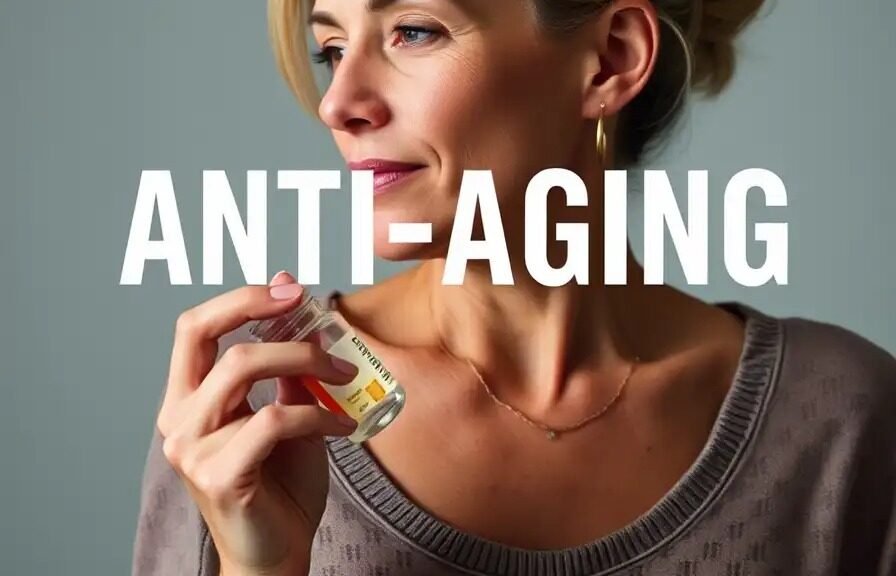Introduction to FDA’s Role in Public Health
The Food and Drug Administration (FDA) plays a crucial role in safeguarding public health by ensuring the safety, efficacy, and security of various health-related products, including drugs, biologics, and medical devices. Established in 1906, the FDA has evolved to become a fundamental regulatory agency that oversees the approval and monitoring processes for a vast range of medical interventions aimed at preventing and treating diseases.
One of the FDA’s primary responsibilities is the assessment of new therapies before they reach the market. This involves a rigorous evaluation process where clinical trials provide evidence regarding the safety and effectiveness of drugs and biologics. The agency relies on data submitted by pharmaceutical companies, which includes preclinical studies and clinical trial results. This information is critical in determining whether a therapy can be approved for public use, as patient safety is the utmost priority.
Moreover, the FDA continues to monitor the performance of approved products post-marketing to ensure ongoing safety and efficacy. This surveillance includes reporting systems for adverse events, inspections of manufacturing facilities, and evaluations of scientific literature. The significance of these post-market activities cannot be overstated, as they help identify potential issues that may arise after a product is widely used.
The evaluation process is underpinned by the principles of transparency and public health advocacy. By prioritizing rigorous scientific evaluation and regulatory oversight, the FDA helps maintain trust in medical advancements. Patients and healthcare providers can rely on FDA-approved therapies, knowing that they have undergone extensive testing. Ultimately, the FDA’s commitment to public health reflects its broader role in helping to advance medical science while ensuring that the American public has access to safe and effective treatments for their health needs.
What Are New Therapies and Why Are They Important?
New therapies refer to innovative treatment options that are developed to prevent and manage diseases. These treatments can include novel pharmaceuticals, biologics, gene therapies, and advanced medical devices. The importance of new therapies lies in their potential to address pressing medical needs that existing treatments cannot adequately fulfill. Innovations in medicine are driven by the continuous evolution of scientific understanding as well as advancements in technology, both of which contribute to the development of more effective interventions.
One of the primary motivations for creating new therapies is the recognition that health conditions can vary widely in their manifestations, responses to treatment, and individual patient needs. For patients suffering from chronic diseases, rare conditions, or those unresponsive to current standard treatments, new therapies offer hope for improved outcomes. The introduction of such therapies may enable healthcare providers to offer personalized treatment plans that better align with a patient’s specific medical profile.
Moreover, the emergence of new therapies can significantly impact public health strategies by introducing more efficient methods for disease prevention. In the context of infectious diseases, for example, novel vaccines and antiviral therapies can mitigate outbreaks, consequently improving population health outcomes. Beyond infectious diseases, advancements in oncology, neurology, and other fields have resulted in therapies that can reduce symptoms, prolong life, and enhance patients’ overall quality of life.
In conclusion, the development of new therapies is a fundamental aspect of modern medicine. They not only represent a beacon of hope for patients facing challenging health conditions but also enable healthcare systems to adapt to evolving medical needs. The focus on innovating and diversifying treatment options continues to drive research efforts and investment in the healthcare sector, ensuring that patients have access to the best possible care.
FDA Approval Process for Medical Products
The FDA approval process for medical products is a rigorous and structured approach aimed at ensuring the safety and efficacy of new drugs and treatments before they reach the market. This process primarily involves several distinct phases of clinical trials, each designed to answer critical questions about the product’s performance, safety profile, and potential risks.
The approval journey begins with preclinical research, which usually includes laboratory and animal studies to identify a product’s safety and biological activity. Following this stage, if the initial results are promising, the sponsor submits an Investigational New Drug (IND) application to the FDA, seeking permission to initiate human trials. This leads us into phase one trials, which focus on evaluating the safety, dosage, and side effects of the drug among a small group of healthy volunteers.
Phase two trials expand the candidate’s evaluation, typically involving several hundred patients suffering from the condition the drug aims to treat. This phase assesses the efficacy of the product, further refines the dosing strategies, and continues to monitor safety. If the results are favorable, the product enters phase three trials, which include thousands of participants. This pivotal phase compares the new treatment against standard therapies or a placebo. The data collected from these trials are critical, as they provide substantial evidence regarding the product’s effectiveness and any adverse reactions.
Once the clinical trials conclude successfully, the sponsor submits a New Drug Application (NDA) to the FDA, where the accumulated data from all trial phases is meticulously reviewed. The FDA’s evaluation process takes into account the findings from the trials, including the safety, efficacy, and manufacturing practices utilized to create the new drug. This comprehensive analysis ensures that any medical product granted approval meets the established standards for public health protection.
Emergency Use Authorization (EUA) Explained
Emergency Use Authorization (EUA) is a regulatory mechanism that allows the U.S. Food and Drug Administration (FDA) to facilitate the availability of medical products, including vaccines, diagnostic tests, and treatments, during public health emergencies. Established under the Federal Food, Drug, and Cosmetic Act, EUA enables the FDA to expedite the review process for medical interventions that may be effective in preventing or treating serious diseases or conditions when traditional approval routes may take longer due to urgent circumstances. This mechanism is particularly significant during public health crises such as pandemics, where time is of the essence.
To qualify for an EUA, certain criteria must be met. Firstly, there must be a declaration from the Secretary of Health and Human Services (HHS) that an emergency exists, prompting the need for faster access to potentially life-saving therapies. Secondly, there must be evidence suggesting that the medical product in question may be effective against the disease or condition, although this evidence does not need to be as rigorous as that required for full approval. The FDA evaluates the safety profile of the product, considering both the potential benefits and risks associated with its use. This evaluation is crucial to ensure that the product’s availability does not pose unreasonable safety risks to patients.
Furthermore, even under EUA, the manufacturer must provide the FDA with a detailed description of how the product will be utilized and ensure proper labeling that informs healthcare providers of the emergency use status. The authorization is temporary and remains in effect until the declared emergency ends or the FDA formally rescinds the EUA. Through this expedited process, the FDA plays a vital role in ensuring that patients gain quicker access to potentially transformative therapies, highlighting the importance of timely innovation in public health response efforts.
Understanding Expanded Access (Compassionate Use)
The Expanded Access program, commonly referred to as Compassionate Use, serves as a vital pathway for patients seeking investigational drugs outside the confines of clinical trials. This program is particularly pertinent for individuals suffering from serious or life-threatening conditions, where traditional treatment options have proven ineffective or non-existent. The FDA establishes specific criteria to assess eligibility for such access, which includes the requirement that no satisfactory alternative therapies are available, and that the potential benefits of the investigational treatment outweigh the potential risks involved.
In instances where a patient’s need is urgent, healthcare providers may submit a request to the FDA, detailing the patient’s medical condition and the rationale for using the unapproved drug. Upon receiving this application, the FDA evaluates it to ensure that it meets the required standards. Additionally, the manufacturer of the investigational drug must also agree to provide the treatment. This collaborative approach ensures that patient safety remains paramount while allowing access to potentially life-saving therapies that are still under development.
The ethical considerations surrounding Expanded Access cannot be understated. It raises important questions about fairness, informed consent, and the potential for exploitation. Patient autonomy is crucial in decision-making regarding unapproved therapies, yet it must be balanced with the responsibility of ensuring that patients are fully informed about the uncertainties and risks involved. Healthcare professionals play a key role in facilitating these discussions, guiding patients through the complex landscape of investigational drugs while respecting their dignity and personal choices.
Ultimately, Expanded Access programs embody the intersection of hope and regulation, offering a potential lifeline for patients whose conditions may not allow them the luxury of time to wait for clinical trials to conclude. By permitting compassionate use of investigational treatments, the FDA seeks to accommodate the urgent demands of patients while maintaining necessary oversight in the realm of drug development.
Navigating Fast Track and Breakthrough Therapy Designations
The U.S. Food and Drug Administration (FDA) has established various expedited pathways to encourage the development of novel therapies aimed at addressing unmet medical needs. Among these pathways, the Fast Track and Breakthrough Therapy designations play crucial roles in accelerating the progression of promising treatments through the regulatory process. Understanding these designations is essential for both developers and patients seeking potential therapies that may offer substantial benefits.
Fast Track designation is designed for drugs that treat serious conditions and fill an unmet medical need. This designation allows for a more interactive, ongoing communication between the drug developers and the FDA throughout the review process. By facilitating early discussions regarding the development program, the FDA enables sponsors to obtain feedback on trial design and the necessary data needed for approval, potentially minimizing delays and enhancing the likelihood of successful outcomes.
On the other hand, the Breakthrough Therapy designation takes this concept a step further. This designation is granted to drugs that demonstrate preliminary clinical evidence showing they may provide substantial improvement over existing therapies for serious or life-threatening diseases. Additionally, Breakthrough Therapy designation emphasizes intensive guidance from the FDA on the development of the therapy, which may include streamlined clinical trial designs to bolster efficacy and safety data.
Both the Fast Track and Breakthrough Therapy designations aim to expedite the development and review process, thus fostering innovation and improving access to potentially life-saving treatments. By prioritizing therapies that exhibit significant advantages over current standards of care, the FDA ensures that patients have earlier access to breakthrough options that could positively impact their health outcomes. Ultimately, these designations represent an essential aspect of the FDA’s commitment to addressing critical healthcare challenges through the timely introduction of effective therapies.
Role of the Advisory Committee in the FDA Approval Process
The FDA’s decision-making process for approving new therapies is significantly enhanced by the involvement of advisory committees. These committees comprise an assemblage of experts who provide independent, informed opinions to assist the FDA in evaluating the efficacy, safety, and overall risk-benefit profile of novel medical interventions. Their significance lies in their ability to incorporate diverse perspectives, ultimately shaping the recommendations made to the agency regarding potential regulatory actions.
Typically convened to discuss specific drug applications, advisory committees serve as a forum for deliberation on complex issues. Members may include clinicians, scientists, and patient representatives, each bringing specialized knowledge relevant to the drug in question. Their expert evaluation is particularly critical in addressing areas such as clinical trial design, therapeutic efficacy, and potential adverse effects. These discussions help ensure that patient safety remains a priority as new therapies are assessed.
Furthermore, advisory committees offer a platform where stakeholders, including representatives from the pharmaceutical industry and patient advocacy groups, can present their insights. This collaborative approach fosters transparency and trust in the FDA approval process, as it allows for the dissemination of a variety of viewpoints concerning the treatment options being evaluated. The breadth of expertise among committee members can also identify potential flaws in study methodologies, encouraging more rigorous evaluation standards.
Following the meetings, advisory committee recommendations are taken into consideration as the FDA formulates its decision regarding a therapy’s approval pathway. While these recommendations are not binding, they carry significant weight and can influence the final determination made by the FDA. In this manner, advisory committees play a crucial role in ensuring that new therapies introduced into the market possess a favorable balance of benefits and risks, thereby safeguarding public health and advancing therapeutic innovation.
Post-Market Surveillance and Ongoing Evaluation
Post-market surveillance represents a critical component within the framework of the FDA’s regulatory practices. Once a therapy is approved for public use, its safety and effectiveness must continue to be monitored rigorously. The rationale behind this ongoing evaluation is multifaceted; while a therapy may demonstrate promise during clinical trials, real-world applications may expose unforeseen complications. Thus, the primary objective of post-market surveillance is to ensure that any potential adverse effects are promptly identified and addressed.
The FDA employs several mechanisms for ongoing evaluation, including the Sentinel Initiative, which utilizes a system of linked electronic health data to detect potential safety issues with approved therapies. This program aims to improve the capability of the FDA to monitor the safety of drugs and biologics through active surveillance, significantly contributing to the overall assessment of therapeutic profiles in broader populations. Additionally, the FDA oversees Risk Evaluation and Mitigation Strategies (REMS), which are required for certain medications that might pose serious risks. REMS ensures that both healthcare providers and patients are adequately informed about the safety profiles associated with these therapies.
A robust reporting system is foundational to the efficacy of post-market surveillance. The FDA encourages healthcare professionals and consumers to report any adverse events related to approved therapies through the MedWatch program. By collecting data about post-marketing experiences, the FDA can continuously evaluate the benefit-risk profiles of therapies, making informed decisions about whether regulatory actions are necessary. These actions may range from updating labeling information to, in extreme cases, revoking a therapy’s market approval if safety concerns become untenable. Therefore, ongoing evaluation and swift reporting are essential in safeguarding public health and sustaining the reliability of medical therapies in the marketplace.
Conclusion and Future Directions in FDA Regulations
Understanding the nuanced terminology of the FDA is pivotal for patients, healthcare professionals, and various stakeholders involved in drug development and approval. The lexicon used by the FDA, which includes terms like ‘breakthrough therapy,’ ‘orphan drug,’ and ‘fast track designation,’ plays a crucial role in how new therapeutic interventions are perceived and how stakeholders can navigate the complex landscape of drug approval. A clear grasp of these terms enables better communication, informed decision-making, and ultimately contributes to enhanced healthcare outcomes.
As we look towards the future of FDA regulations, it is essential to consider how emerging technologies and methodologies can transform the drug approval process. Innovations, such as artificial intelligence in drug discovery and the integration of real-world evidence in evaluating efficacy, have the potential to expedite the approval of promising therapies. Additionally, the push for more patient-centric approaches in regulatory science advocates for transparency and inclusivity, promoting an understanding of patient experiences and needs within the development paradigm.
Moreover, the evolving landscape of personalized medicine necessitates ongoing updates to FDA regulations to ensure that they align with the pace of scientific advancements. As precision medicine continues to gain traction, regulations may evolve to accommodate therapies tailored to the genetic profiles of individuals, thus expanding treatment options significantly. Such developments highlight the importance of staying informed about regulatory updates and participating actively in discussions surrounding new therapies.
In summary, a thorough understanding of FDA terminology is not merely beneficial; it is essential for anyone involved in the healthcare ecosystem. As the field of regulatory science progresses, stakeholders must remain vigilant and engaged, ensuring that both safety and innovation continue to progress hand in hand in the fight against diseases. The future of FDA regulations promises exciting possibilities that require collective awareness and adaptation from all parties involved.





